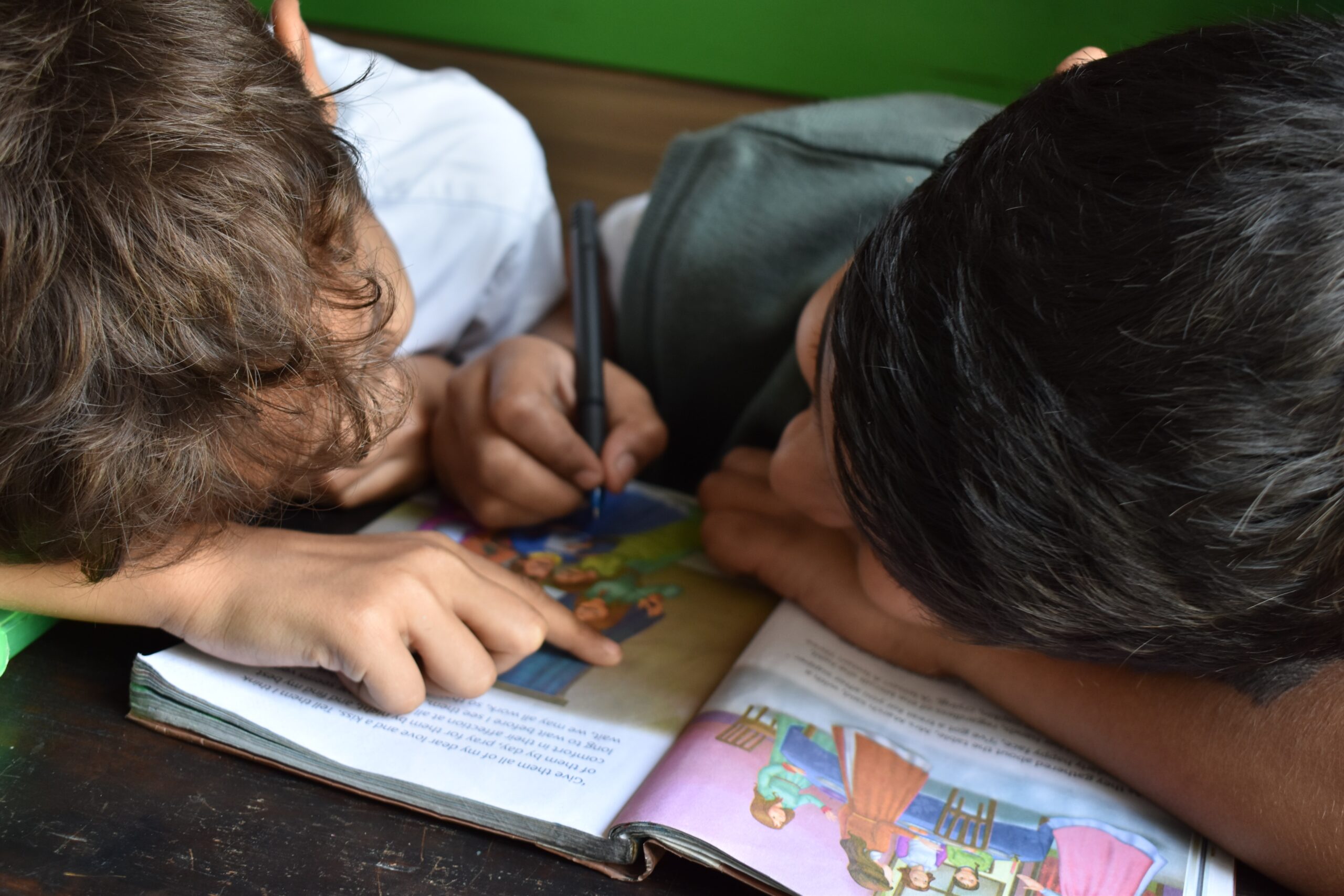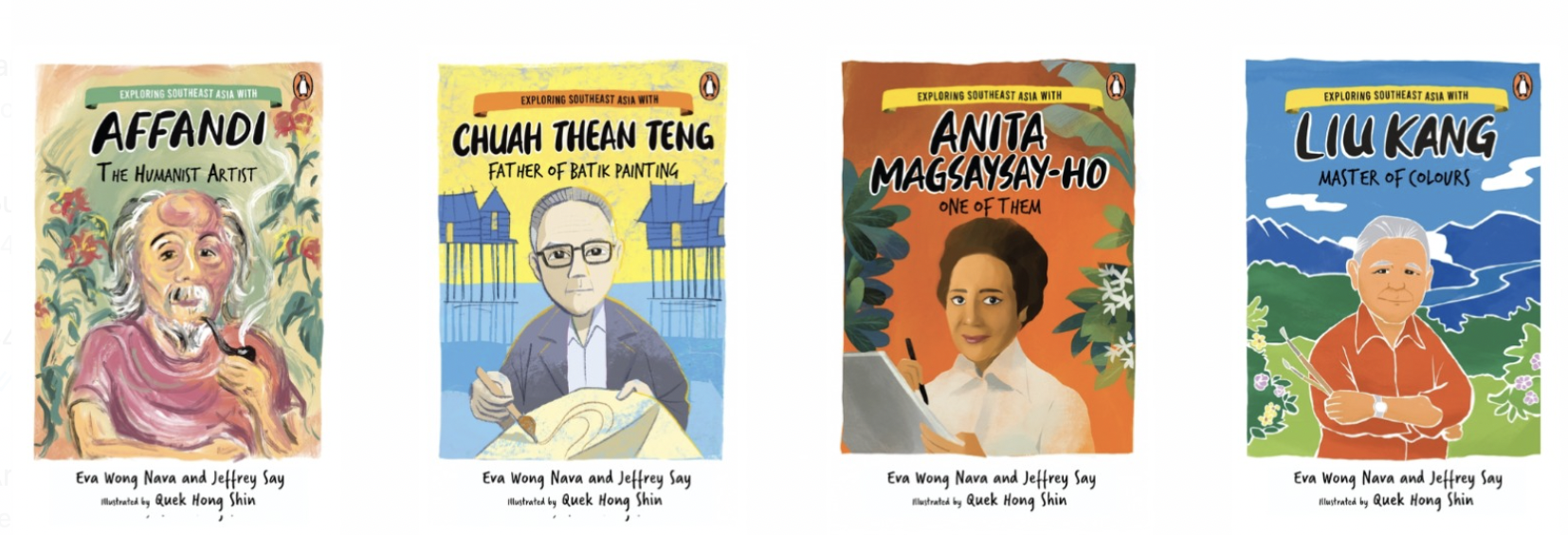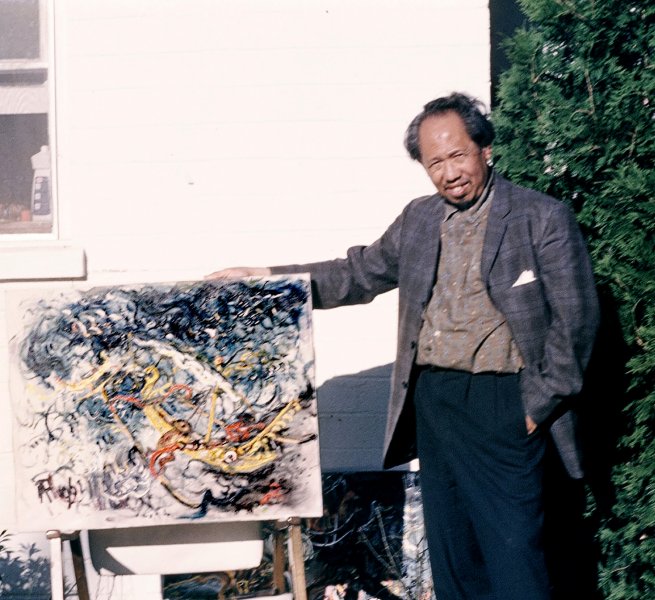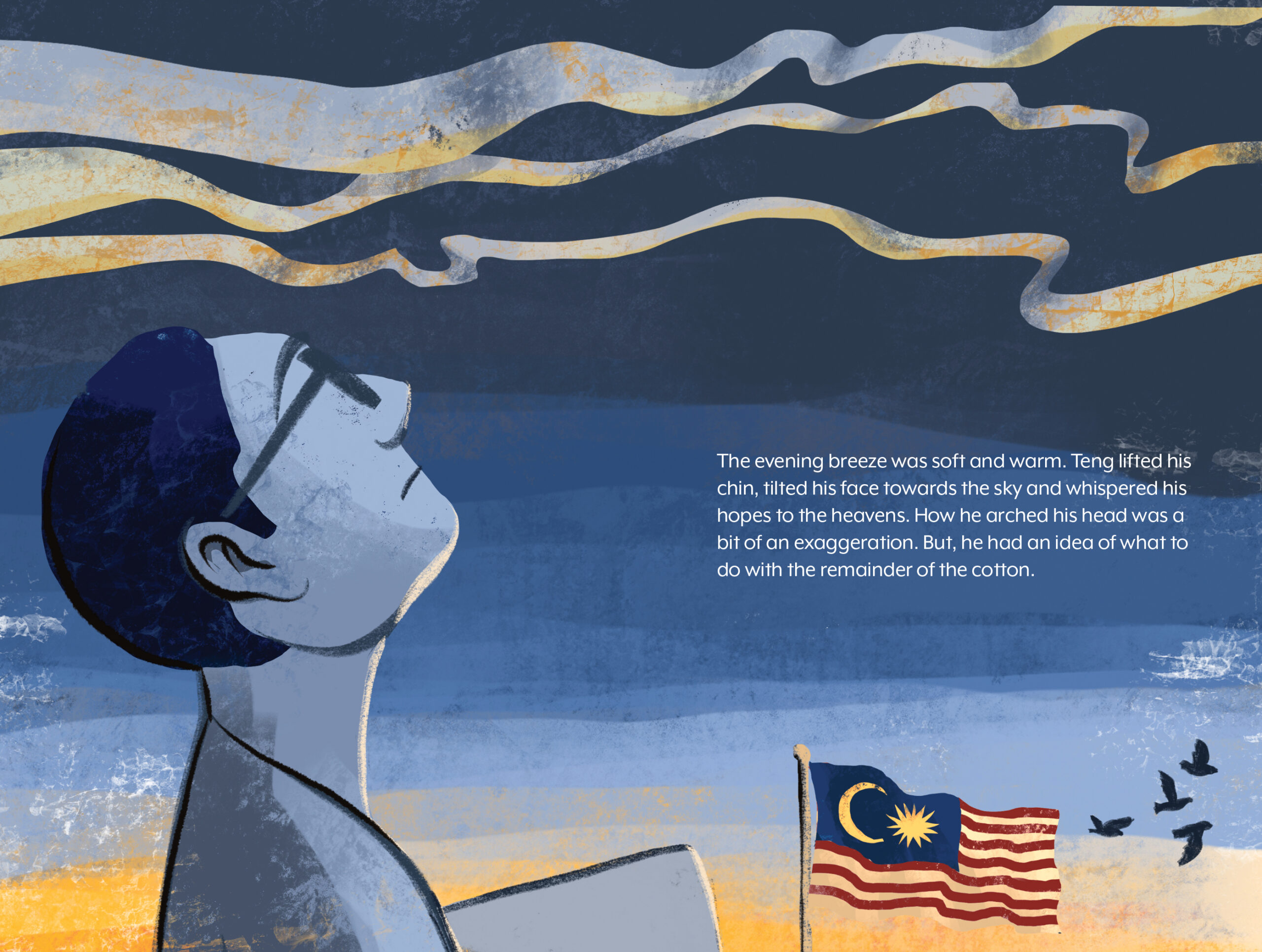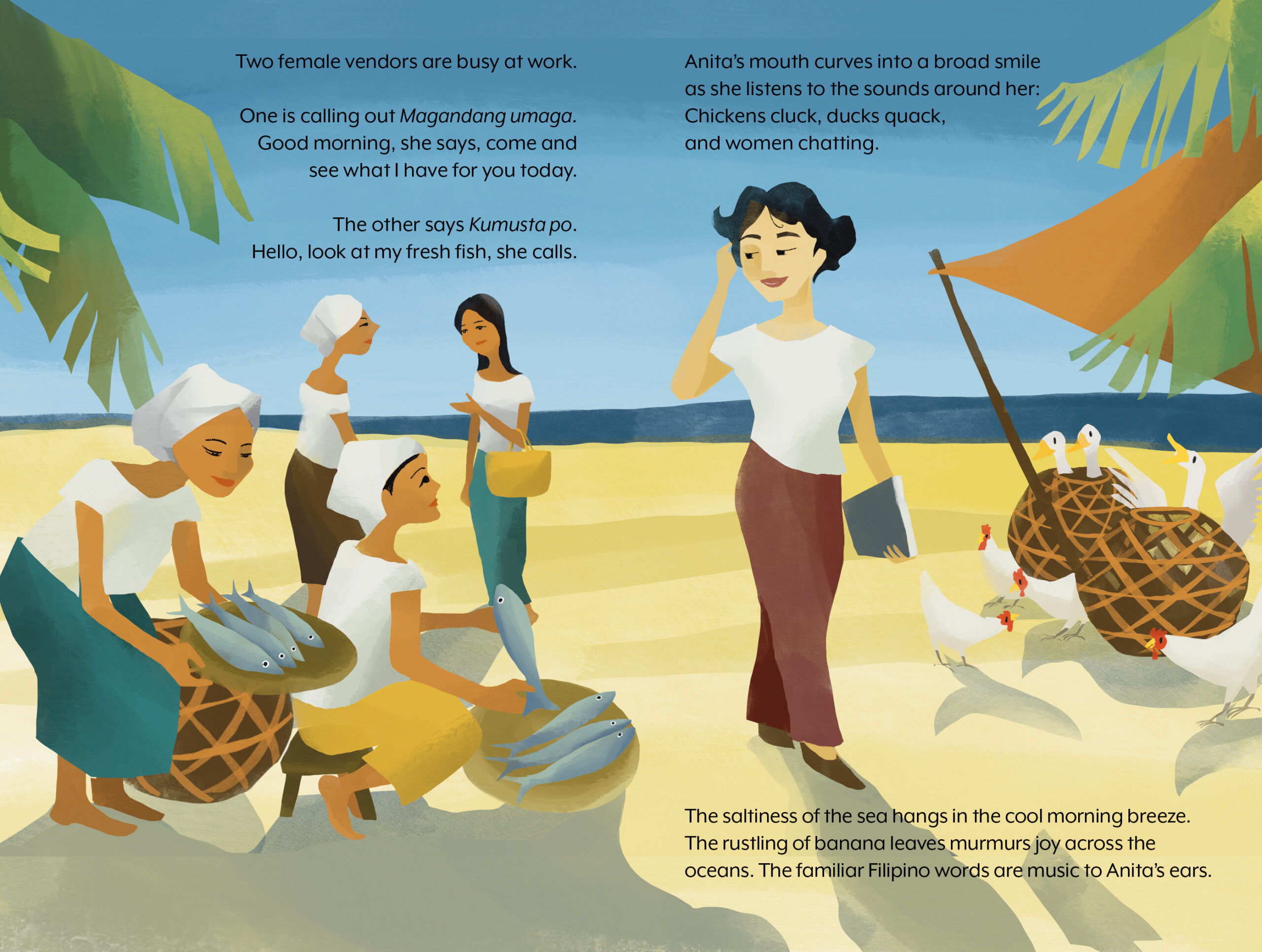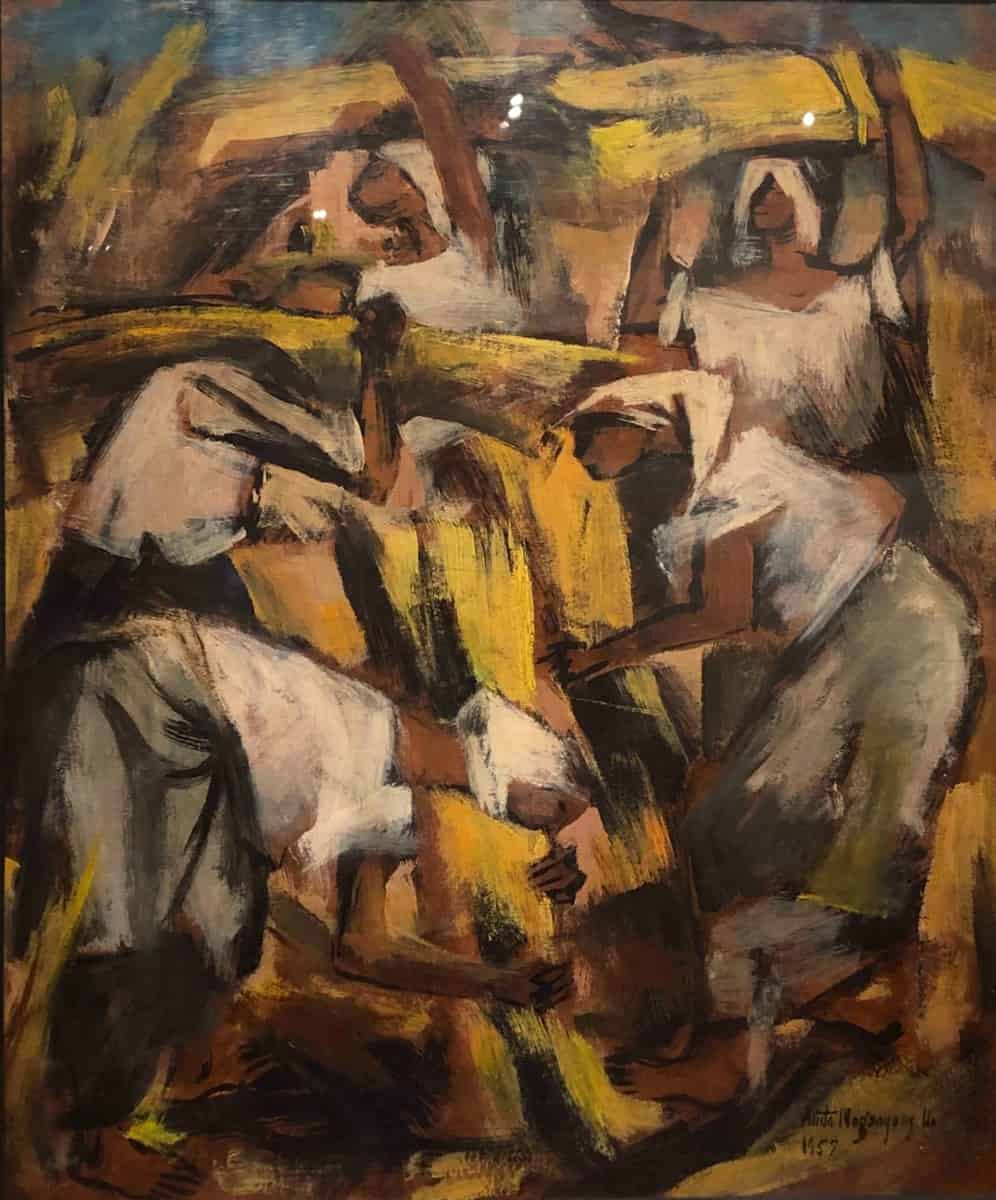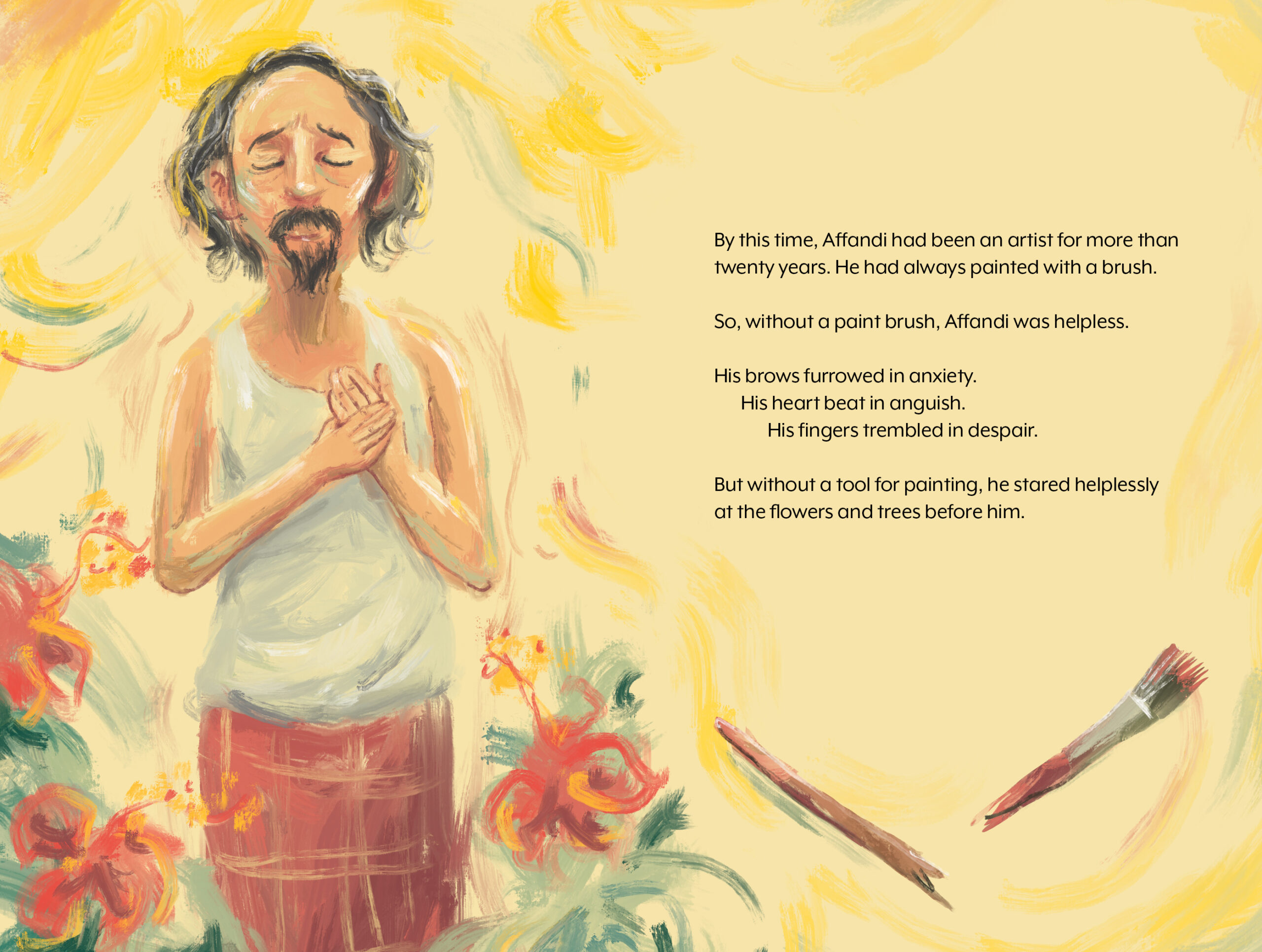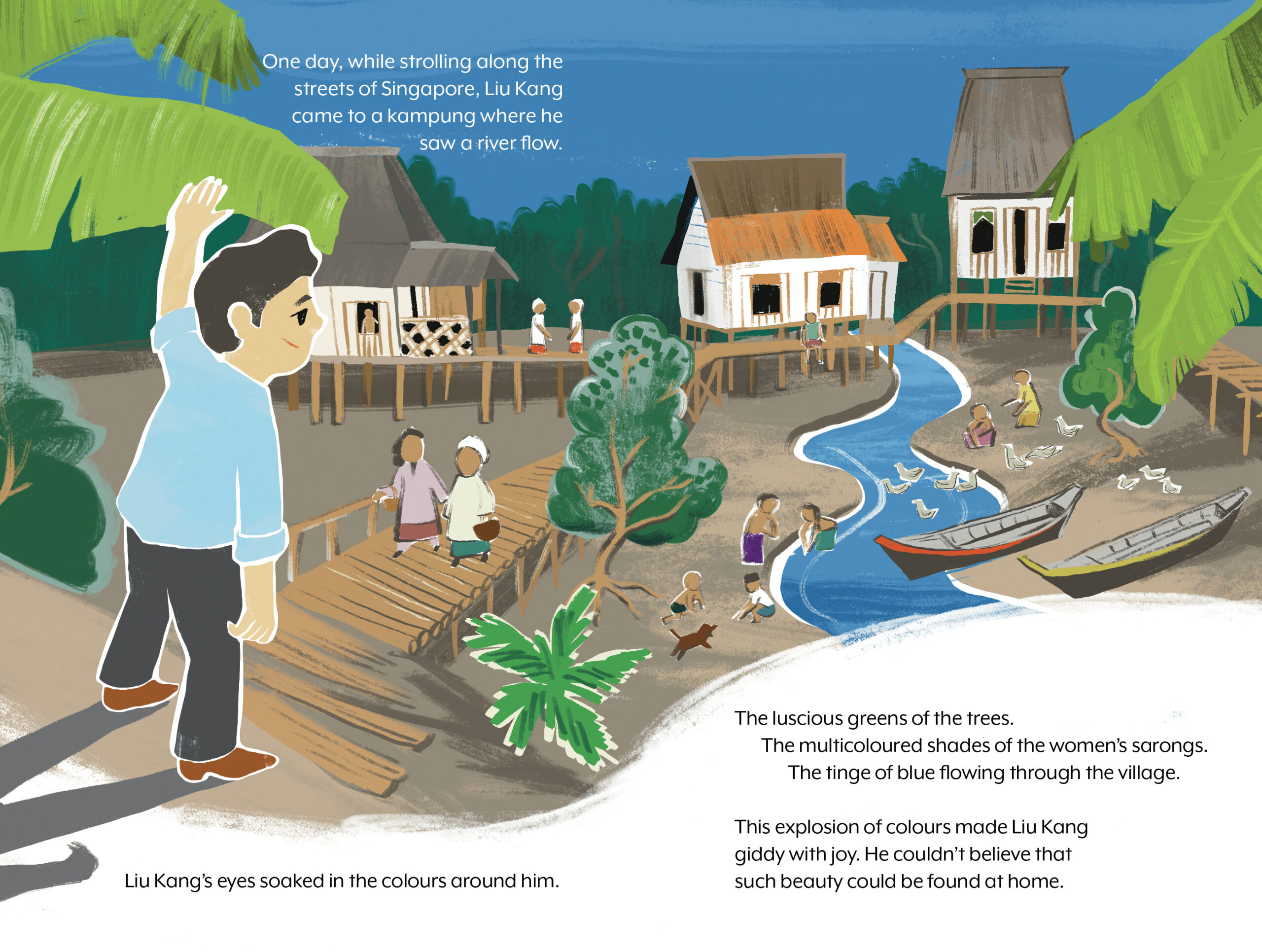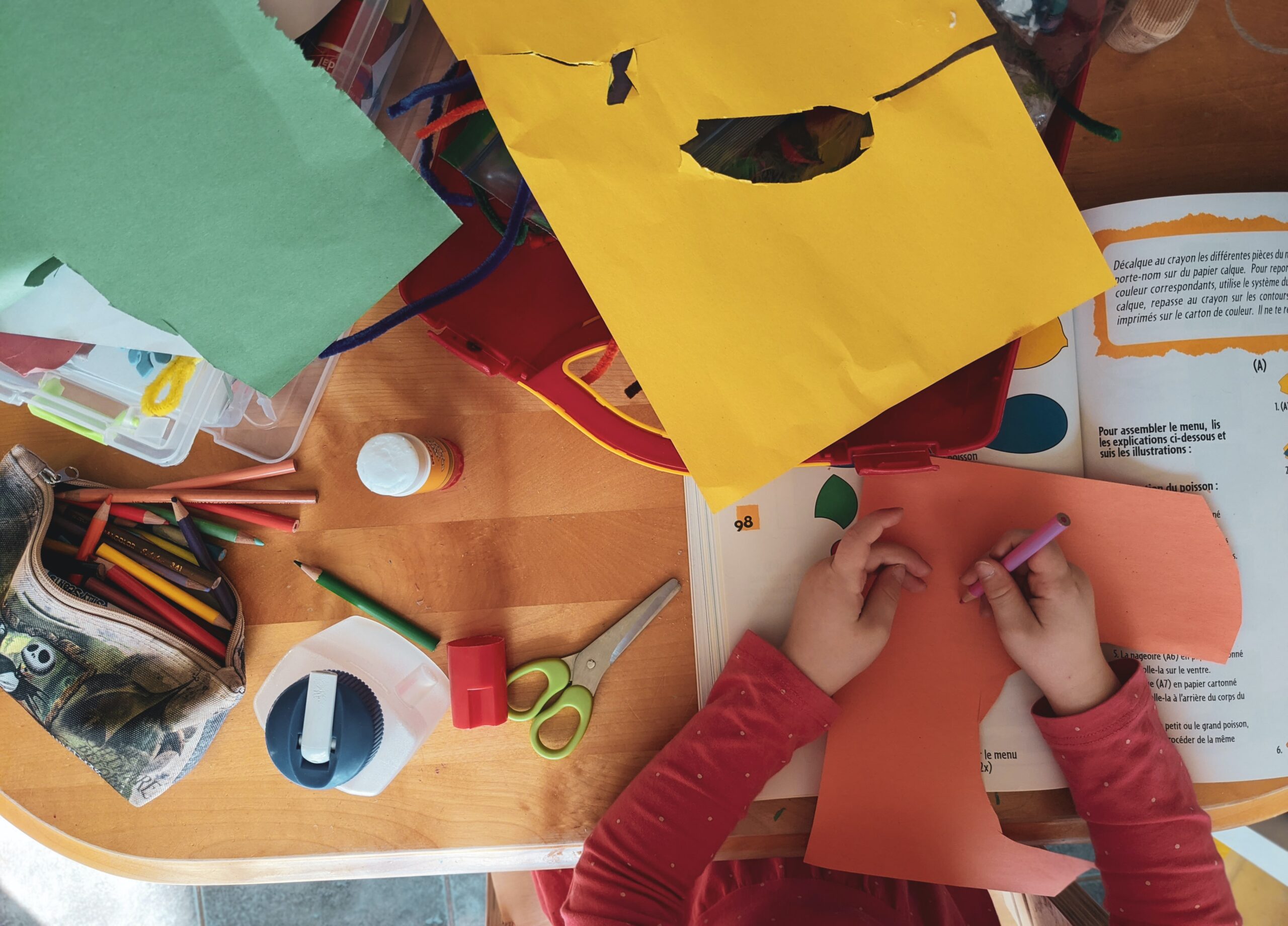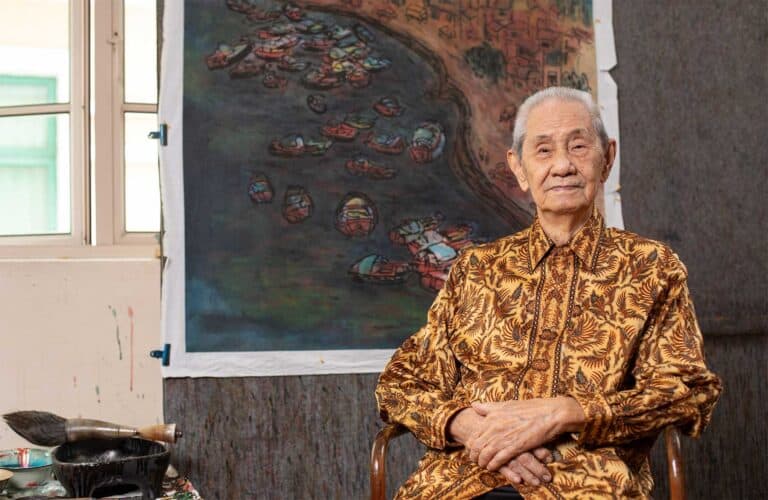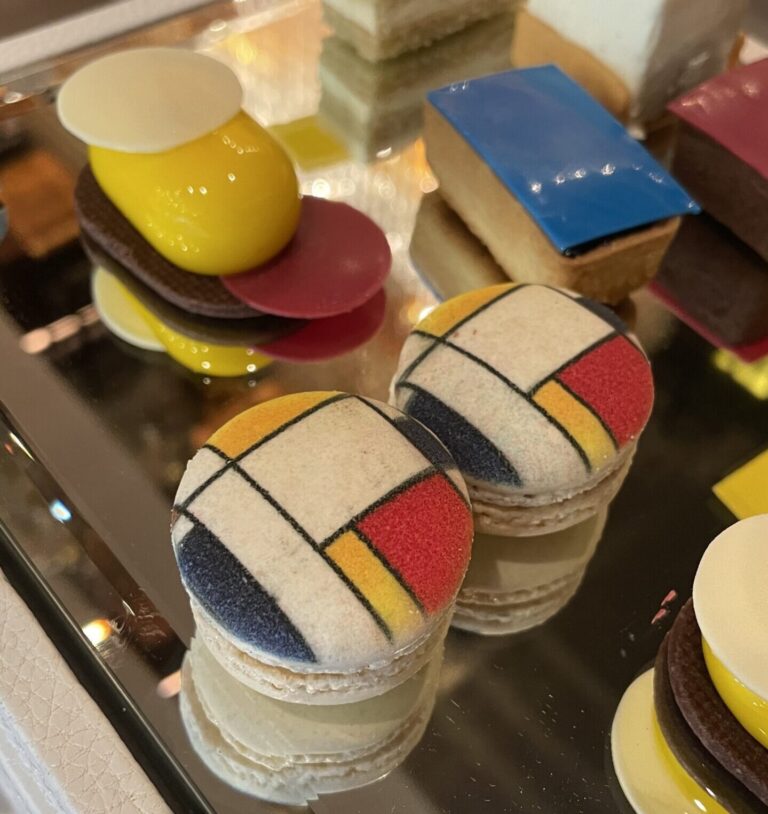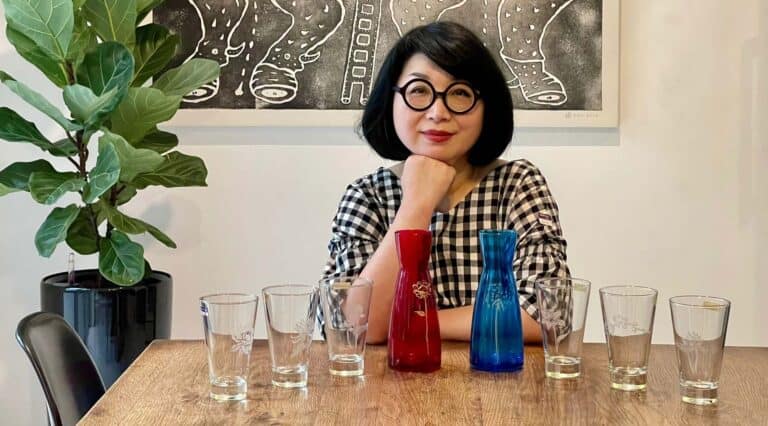Think art history, and an image of wizened professors holed up in musty libraries probably comes to mind. It’s hard to detach our impressions of the discipline from old, white men and their grand, abstruse annals.
But three passionate art lovers are shaking things up with something quite unexpected — a series of Southeast Asian art history books for children.
Wanting to spark an interest in art among young readers (aged six to nine), Jeffrey Say, Eva Wong Nava, and Quek Hong Shin got together to research, write and illustrate four artist biographies. These books will fall under the series Exploring Southeast Asia With…
Each member of the trio brought their expertise to the table. Say, who leads the MA Asian Art Histories programme at LASALLE College of the Arts, handled the bulk of the research; Wong Nava, who is a full-time children’s book author, moulded this information into narrative; and Quek, a freelance artist who writes and illustrates children’s books, brought the words on the page to life with captivating visuals.
As art history nerds here at Plural, we were stoked to learn about the project. In addition to filling an unmet niche in Singapore, the very idea of art history for children raises important questions: who gets to be written into art history, who gets to write it, and, most importantly, who is it for? To find out more, I sat down with the three for a sneak preview of the books.
Spontaneous beginnings
Perhaps the question on everyone’s lips: how did the project come about? “Jeff and I are friends who go to museums and see exhibitions together — sort of like ‘art kaki’, as we call ourselves,” shared Wong Nava, explaining how the project grew out of an impromptu conversation with Say. “I was looking for art books for my children. There were a few at the National Gallery Singapore that I found, and I was curious to see that there weren’t others.”
Instead of just asking why there weren’t more children’s books on modern and contemporary Southeast Asian art, the two decided to do something about it. They approached Quek to collaborate on the project and pitched the idea to Penguin Random House.
Surprisingly, the publisher said “yes” right away, even though the trio hadn’t submitted a manuscript yet. In fact, Penguin wanted four books in the series, rather than just one at a time.
“That was a hefty project. At some point, we thought we were mad,” laughed Wong Nava. But, having recognised a gap on the shelves, the three pressed on with the project.
Four major artists — Liu Kang, Anita Magsaysay-Ho, Chua Thean Teng, and Affandi — were selected for the series, which is aimed at children who might be learning about them for the first time.
Many of these artists had led lives as colourful as their works and are regarded as national or cultural heroes, which made for engaging narratives. Affandi’s charismatic, pipe-puffing personality, for instance, provided all the ingredients needed for a good story.
Rigorous research
But don’t let the accessible children’s stories fool you into thinking that the art historical research behind the narratives was anything less than rigorous. Lots of work went into ensuring that the historical details were substantial and accurate. “For Chua Thean Teng, I managed to get in touch with his sons, who are actually artists in Penang,” Say recalled. “They gave us some archival materials which were quite helpful.”
In fact, it was these materials which helped Wong Nava to find, within Chua’s biography, “that pivotal moment that changed the history of art in the region.” Each story is anchored by one of these moments.
“For Liu Kang, it was the [1952] Bali trip. For Magsaysay-Ho, it was the decision to paint Filipino women. For Affandi, it was that moment when his brush broke, and he couldn’t paint anymore, so he used his fingers. And that changed history, you know. I have goosebumps just talking about that,” said Wong Nava.
Bridging narratives and illustrations
Apart from the narrative, perhaps the most notable thing about the series is that each book is illustrated in a distinct style informed by the artist’s personal idiom. The figures in Liu Kang’s biography, for instance, are outlined in white, evoking the artist’s signature batik-inspired style, while Affandi’s story is told in vibrant, gestural swirls reminiscent of his finger-painted canvases.
“I was inspired by their brushstrokes, their art styles, and I tried to reflect that in the illustrations,” Quek explained. “I took some time to look at their paintings and sketch things out, and to really appreciate their works.”
Besides allowing each artist’s style to bleed into the illustrations, the team also deliberately crafted the text so it would reflect the tenor of the individual narratives. “Each book also has a different ‘voice’, and that ‘voice’ comes from the research that was done behind the writing of the book,” shared Wong Nava.
Different textual styles are present even within each book. While the main narrative might be considered creative non-fiction (that is, it is historically accurate but reads like fiction), each biography also ends with a series of questions, photographs of the artworks, and further writing on them in the style of non-fiction.
“This feeds into their curriculum at school as well, where they’re learning composition, be it in the form of fiction or non-fiction,” explained Wong Nava, who studied Renaissance art history. Both Jeffrey and Eva come from teaching backgrounds and are strong advocates for art education.
“If we hope to create a cultured society, I think we have to [get children started on art history] when they are young,” said Say. Plans are underway to promote these books to schools, in the hopes that they will be acquired as teaching resources.
Matters of access and education
Art education in museums here has also been gaining traction — I’ve often come across classes of children seated in front of paintings in the National Gallery Singapore’s permanent galleries — so it’s not hard to imagine that the books might be used as guides for appreciating the works on view.
“Visual literacy starts with looking,” said Say, emphasising the importance of fostering the habit of observation in elementary education. “I think there was a study done — the average museum-goer spends about 27 seconds looking at an artwork.”
To encourage their readers to spend more time examining the artworks, the books include a series of questions on formal elements in the works (the use of colour and line, for instance) and how they might affect the viewer’s response.
Quek’s illustrations play a role in familiarising children with the practice of close observation and analysis. Comparing the illustrations with the original artworks at the back of each book encourage young readers to consider which key elements they have in common, and how they make up a distinctive “style”.
Though questions of styles and representation over time — the stuff of art history as a discipline — are tackled in the back matter rather than in the main narratives, the books nonetheless aim to spark curiosity among the children. Hopefully, this foundational interest would open up further opportunities for learning. Wong Nava said,
“Children like to learn about other people. That was the entry point for us as writers.”
The future of art education
What, then, would the three hope for young readers to glean from the series?
“What I would like the children to take away from this, mainly, is to develop a love for reading,” replied Wong Nava. “Non-fiction, which people might think is very boring, can be interesting. It depends on how you write it.”
Say’s response had more to do with re-adjusting art history’s Eurocentric lens. Children’s books on artists like Picasso and Kandinsky aren’t difficult to find, but that isn’t the case for Southeast Asian artists. He answered,
“It’s important for children to know the art around the region, even before they get to know what Western artists are doing.”
Quek, in turn, saw the books as a guide for aspiring young artists. “Inspiration is all around us. All four artists took inspiration from the people around them, the sights, the sounds, their homes,” he reflected. “A few of us can be seeing the same thing, […] but it’s the way we interpret and express it that makes everything unique.”
Moving forward, what are some changes that they envision for the landscape of arts education in Singapore?
“To inculcate an appreciation for art,” replied Quek. “Not just art that you can buy and sell for a lot of money,” continued Wong Nava, referring to a common misconception among Singaporeans that art is only for wealthy collectors.
To her, it would be more important for children to see how artists translated their visions into material form — forms that can last for centuries and speak powerfully to audiences across cultures.
“I also hope that educators and young parents will understand that art appreciation extends to life itself: being observant about the things around you, and even having empathy and looking at things from another person’s point of view. It’s not just about looking at pretty things, but really appreciating the stories behind art,” added Quek.
Summing it up, Say shared:
“Coming back to the idea of a cultured society, the vision is really for art to be a part of our lives. It all needs to start with education.”
____________________________________
The Exploring Southeast Asia With… series. will be released on 22 December 2022. Click here to pre-order the books.
